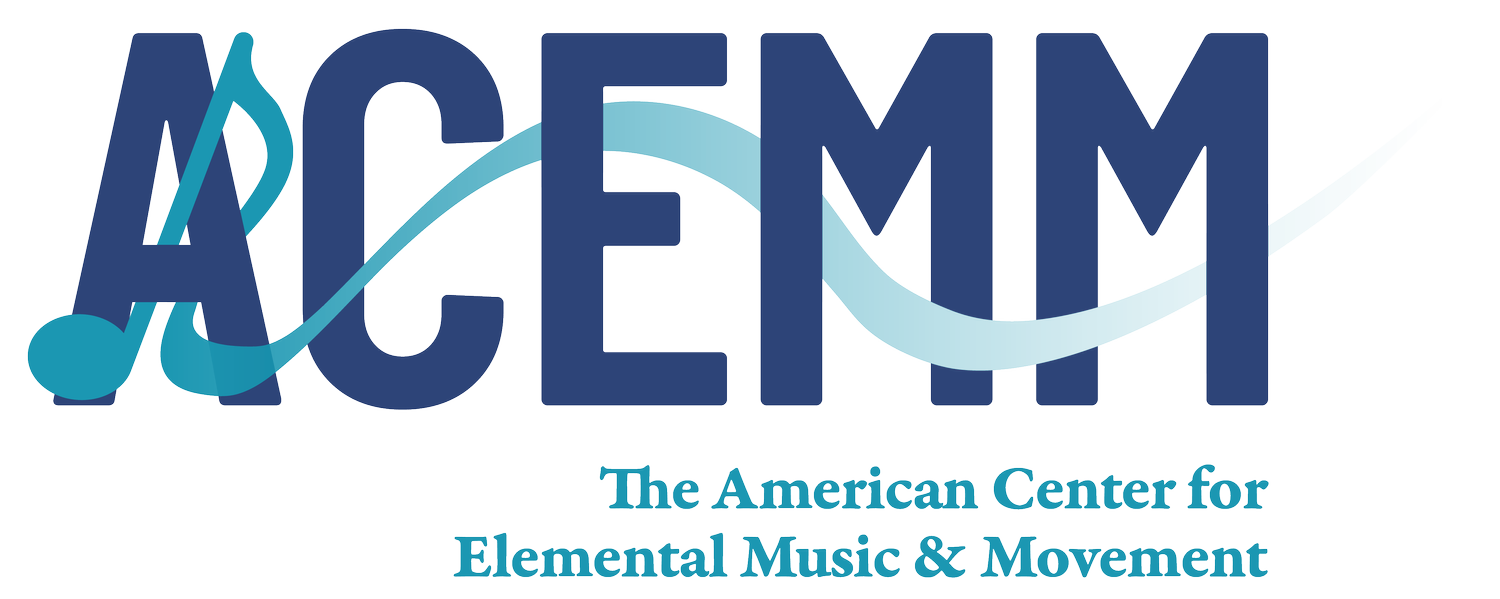THE ICE PROJECT
Coaching Collaborative Composition with Elemental Form and Imagery
by Diana Hawley, 2015 Spotlight Award Recipient
Last winter a team of educators from the Iowa City Community School District – music teachers Beth Ackerson, Jennie Pine and myself along with innovation coach, Mike Haverkamp – developed a collaborative composition project for our fourth grade students that exemplifies the impact of using elemental music as a tool for developing musical understanding in children.
In early conversations, our vision was broad. Like in all creative work in the music classroom, we knew student voice and choice would be key, so we explored how we could give options to students while still providing a clear structure. We also wanted to explore ways of preserving and sharing student work, and innovation coach Mike suggested the possibility recording performances in front of a green screen. With la pentatonic as a pitch focus, we decided that various images of ice and snow could inspire movement and musical ideas (high, middle and low levels or registers, symmetry/asymmetry, contour) in student work. While several pieces in the volumes could have served as an artful model for such a task, we challenged ourselves to compose an original piece for barred instruments. We gathered in Beth’s music room after school one day, and following some experimentation, landed on this arrangement:
Step 1: Movement
Mirroring/Shadowing Exploration
Teacher leads whole class mirroring to recorded music. Student volunteers take over at the front of the class.
Students turn to a partner and take turns leading mirroring. Switch on a sound cue.
Teacher leads shadowing. Compare mirroring and shadowing.
Students take turns leading shadowing in groups of four or more. First, they switch roles with a sound cue, then they practice turning to the new leader when ready to pass on leader role.
Class discussion: What makes movement interesting to watch and do?
Levels: high, medium, low
Shape: symmetrical, asymmetrical, rounded, twisted, angular
The Task
Individually explore strong shapes. Play with symmetry/asymmetry, angular/rounded, high/medium, low levels.
Choose favorite 3 shapes, then move into small groups.
Share ideas, and choose 3 group shapes.
Add steady beat (teacher plays tubano). Change shapes every 4 beats, add a turn (body facing change) in the last pattern. Repeat with new facing.
Half of the class performs, other class observes – I notice, I value, I wonder Then switch.
Step 2: Ensemble
Teach Glockenspiel melody to all
Students listen and watch teacher perform melody. What was the first note? Last note? Show me how it begins. What’s next? (EGA, then same notes but different rhythm EEGGA) Teach measures 3 and 4 as “go-ing up andthen back down…one up, then home.” Students practice with a partner at a barred instrument – first with fingertips, then quiet mallets. Teacher accompanies on tubano. Add contra bass bars.
Students perform melody as sections – woods then metals; BX/BM, AX/AM, SX/SM, GL. Once the melody is solid, perform in canon.
Teach AM: “(me—tals…)Home down home… (me—tals…) Home up home…” Woods play melody, metals play AM part; switch.
Teach AX
First, learn right hand as quarter notes – cue with “2 3 4 wait B A G E 2 3 4 wait, cont.”
Next, play hands together as quarter notes – B and G, A and E, G and D, then home tone E alone.
Finally, break to “2 3 4 wait falling, falling, falling, home, ”
Explore layering – example: CBB, woods melody, metals melody, 2-part canon, back to just CBB and teacher on tubano, GL melody, add AM, add AX, GL out, AM out, end with AX.
Step 3: Composition
Whole class views images of ice and snow. Class picks one to explore as a whole group. What do you notice? Students brainstorm descriptive adjectives and teacher records them on the board.
Teacher guides the conversation to include percussive sounds, patterns, levels, motives, themes, emotions, etc.
Whole class selects a form from the following phrase form bank:
aaba, abab, abac, aa’bc
Whole class crafts samples of movement and melodies on barred instruments (in la pentatonic on E) based the chosen image and form (remind students 4 beats per section, 16 beats total)
Choose your own adventure! Students select an image, form, and a movement or music path and may work independently or in small groups, utilizing the student worksheet as the guide (see attached at the end of the outline)
Scaffolding suggestions
I notice the ice theme begins with E G A. Choose three notes to begin your melody.
In the ice theme, the notes repeat but the rhythm changes. Would you like to borrow that idea?
Does your image remind you of a particular movement and why?
What is the home tone? Let’s find a way to make our way back to E. What would sound interesting after your aa’? Would you like to travel upward or downward or both?
Perform for a classmate. Listen to a classmate. Play your melodies at the same time. Do they fit together? How so? Are they complementary? What do you notice? Would you like to blend your melodies together? Or could you accompany each other?
Step 4: Putting it All Together
Individuals and groups share with the whole class and solicit feedback using I notice, I wonder, I value
Once ready to perform their revised work, students perform compositions in front of a green screen with the selected image. Teacher records with iPad using Green Screen app and edits video using a video editing/sharing tool like Splice.
Final performance may include live ensemble for A section (Ice Composition) with recorded compositions on green screen playing performed as a rondo.






